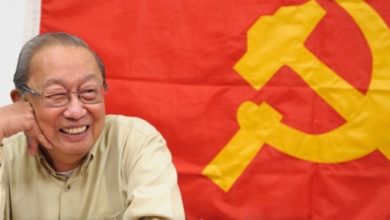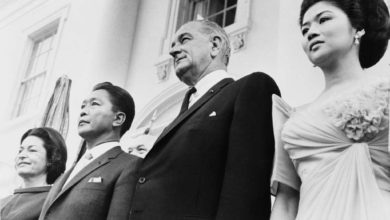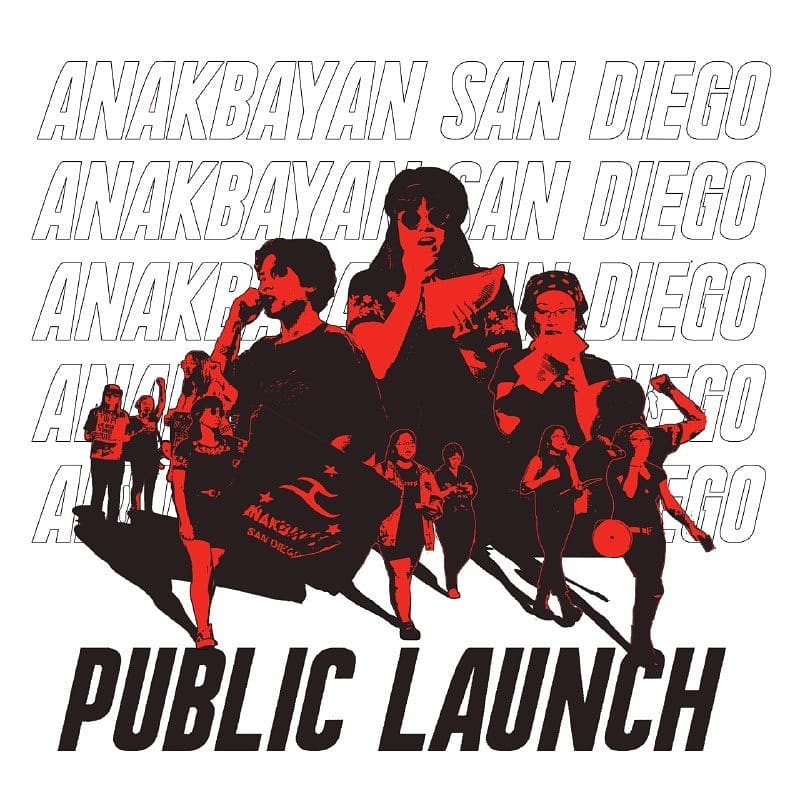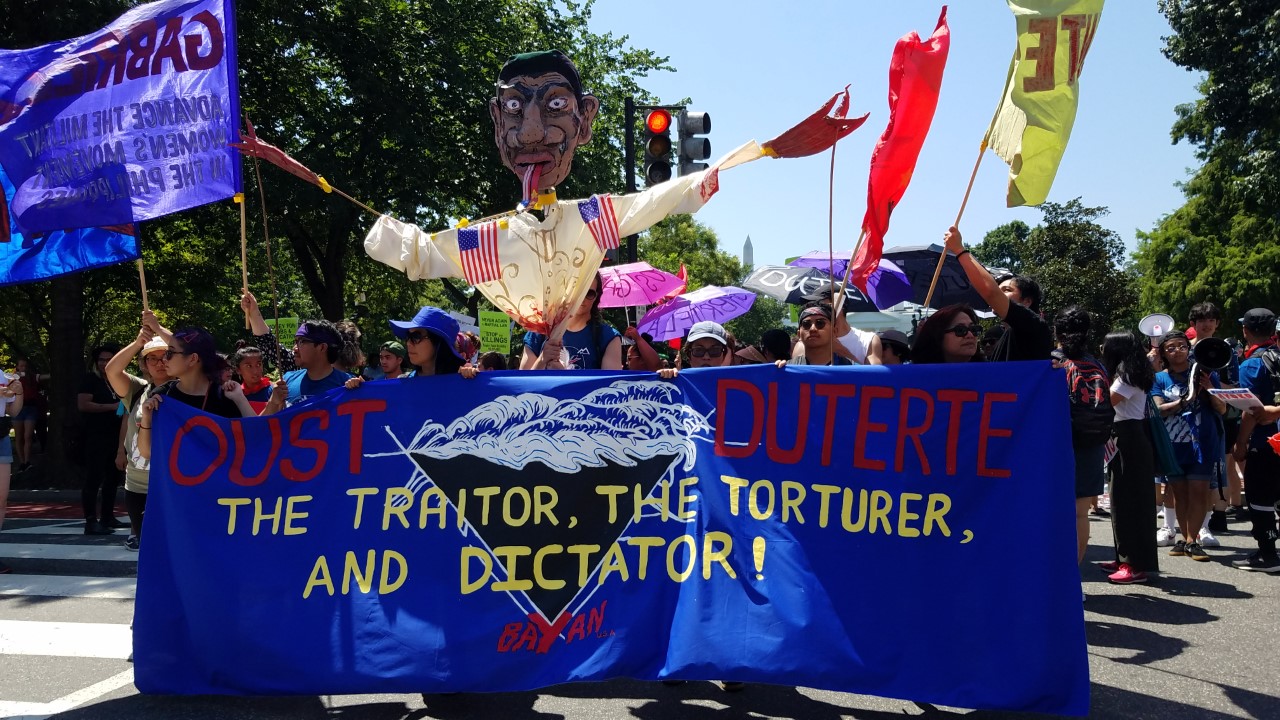On Feb. 24, right-wing Philippines president Gloria Macapagal Arroyo declared a “state of national emergency” throughout the country.
 Protestors demand the ouster of Gloria Macapagal Arroyo. Feb. 23, 2006, San Francisco. Photo: Bill Hackwell |
Arroyo immediately banned all rallies and public gatherings. The government seized TV networks, radio stations and published media, froze all electronic mail and Internet communications and rounded up people without warrants.
The state of emergency was officially lifted a week later on March 3, but repressive measures stayed in effect. There is a heightened level of danger for progressive forces.
While claiming to quell an alleged “military-civic coup,” Arroyo clearly timed the crackdown to prevent massive demonstrations, scheduled to take place on Feb. 24 in Manila and around the Philippines.
A tradition of ousting presidents
 Youth protest outside San Francisco’s Philippines consulate demanding that Arroyo step down. Photo: Bill Hackwell |
The huge mobilizations planned to mark the 20th anniversary of the historic overthrow of the dictator Ferdinand Marcos. The EDSA 1 (for Epifanio de los Santos Avenue in Manila) or “People Power” uprising of 1986 ended the reign of Marcos’ terror, initiated by his martial law declaration in 1972. Although Arroyo’s “state of emergency” declaration prevented the demonstrations from taking place, she seemed to evoke the anniversary herself by mimicking the criminal tactics of the Marcos dictatorship.
More than a military coup, Arroyo feared that the Feb. 24 commemorative demonstrations would accelerate into a mass movement strong enough to oust her. Three days before the state of emergency, Arroyo commented, “The world embraced EDSA I in 1986. The world tolerated EDSA II in 2001. The world will not forgive an EDSA III…”
Arroyo was certainly worried about a repeat of EDSA II, when an unstoppable groundswell of opposition forced then-president Joseph Estrada out of office. His government’s widespread corruption and anti-poor economic policies had made him a clear enemy of the people.
On the night of Arroyo’s crackdown, thousands of people were demonstrating in the streets of Manila and throughout the Philippines. In San Francisco and other U.S. cities, militant protests were held outside the Philippines consulates.
Opposition to Arroyo
Deepening poverty and Arroyo’s failure to reverse the economic plight of the population has fueled the growing opposition. Almost 90 percent of the Philippines’ 88 million people live in poverty, while 15 of the richest families control 60 percent of the country’s land.
High unemployment and lack of economic prospects have created the largest emigration in the world. In the year 2004 alone, one million people left the Philippines to work as contract workers. A total of eight million Filipinos live under super-exploited conditions abroad. The remittances they send home make up almost 32 percent of the country’s gross national product.
Arroyo’s unpopularity also stems from the government’s brutal military repression against the Moro people and the liberation movement in Mindanao, and nationally against the left progressive forces. Arroyo became closely allied with the Bush regime immediately after 9/11. In November 2001, she met with Bush and U.S. Secretary of Defense Donald Rumsfeld to shape a war of attrition against popular movements.
The anti-communist witch-hunt
This latest round of repression is specifically targeting leaders of the broad-based left forces, including the Communist Party of the Philippines, the National Democratic Front, and all its allied mass organizations: Bagong Alyansang Makabayan (BAYAN), Gabriela women’s organization, Pro-People Youth (KMB), Kilusang Mayo Uno workers’ movement (KMU) and others.
Among those rounded up in the “state of emergency” was 73-year-old Crispin Beltran, revered leader, chairperson emeritus of the KMU labor federation and member of the Philippines Congress. He remained in detention after the emergency decree was lifted. Five other leftist members of Congress, including Satur Ocampo and Teodoro Casino of Bayan Muna, Rafael Mariano of Anakpawis and Lisa Maza of Gabriela, were under virtual house arrest in the House chambers. Joel Virador of Bayan Muna was arrested at the airport.
The government’s anti-communist witch-hunt has resulted in over 50 respected leaders of the people’s movements being charged with rebellion, including José María Sison, chief political consultant for the National Democratic Front (NDF) and Luis Jalandoni, the NDF chairperson. Both live in exile in the Netherlands.
Similar to the political situation preceding Marcos’ ouster, Arroyo has now become so unpopular that her continued rule threatens the interests of the United States. If the struggle intensifies against Arroyo, Washington may choose to declare its support for a substitute leader so as to avoid losing control of its client state entirely.
As broad opposition grows by the day, not only from the left but also among journalists’ associations, sectors of the national bourgeoisie and certain sectors of the military, there is a danger that U.S. imperialism may intervene behind the scenes to unleash fascist assaults on the movement.
Military forces loyal to Arroyo formed a 1,200-troop unit of Special Forces, Scout Rangers and Mechanized Infantry to put down any Manila disturbances. The army lieutenant general in charge, Hermogenes Esperon, said, “We hope we can put across our message that the Philippine Army is ready to do its constitutional functions in line with the directives of the chain of command. … I have just said this is a fight for democracy against communism.”
Left forces call for new government
Regardless, the left forces have only intensified their national struggle to oust Arroyo. They continue to propose a new coalition of governing forces, to safeguard civil rights and improve the lives of the impoverished Filipino people.
Prof. José María Sison, chief political consultant for the NDF, issued a call the day after the state of emergency was declared.
He wrote, “According to reports received by the Negotiating Panel of the National Democratic Front (NDFP), the New People’s Army (NPA) led by the Communist Party of the Philippines (CPP) is determined to continue intensifying the revolutionary armed struggle by concentrating its fire on military, police and paramilitary units that are deemed loyal to the Arroyo regime because they do not demonstrate that they are anti-Arroyo by raising a red flag or the Philippine flag with red side up and allowing the troops to wear the red arm bands.
“According to the same information, the CPP, NPA and NDFP are desirous of a revolutionary transition council (predominantly patriotic and progressive) to replace the Arroyo regime on a program of upholding national sovereignty and independence, realizing genuine land reform and national industrialization, promoting a patriotic, democratic and scientific culture, carrying out an independent foreign policy for peace and development and opting for truce and alliance with the revolutionary forces against foreign and local oppressors and exploiters.”
Articles may be reprinted with credit to Socialism and Liberation magazine.





